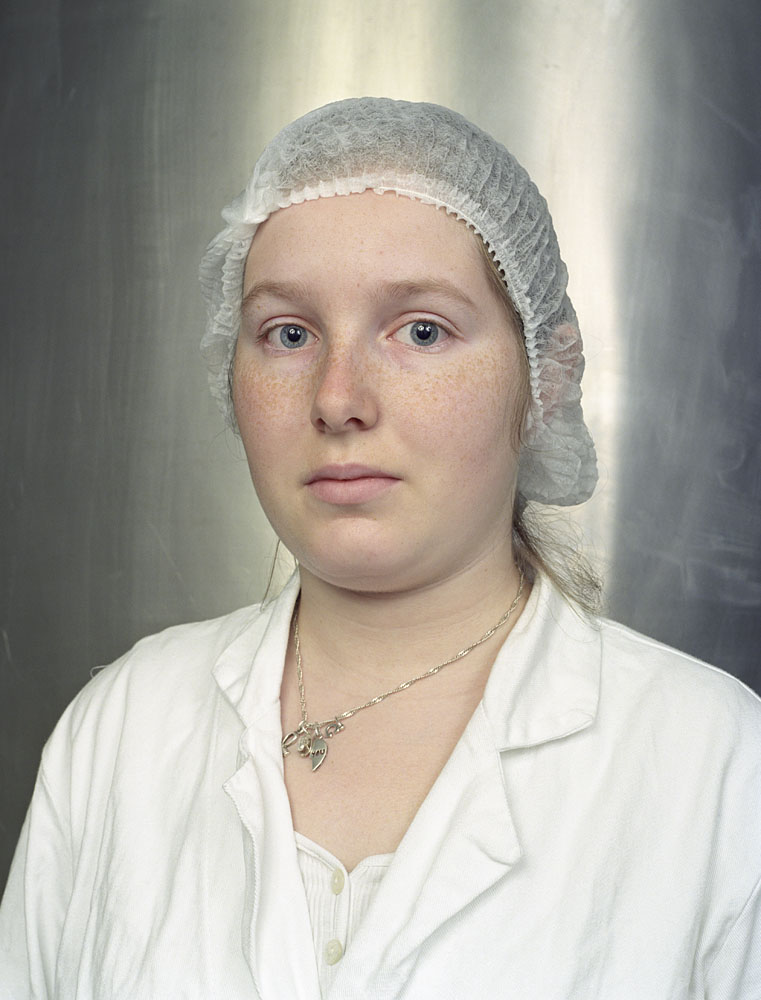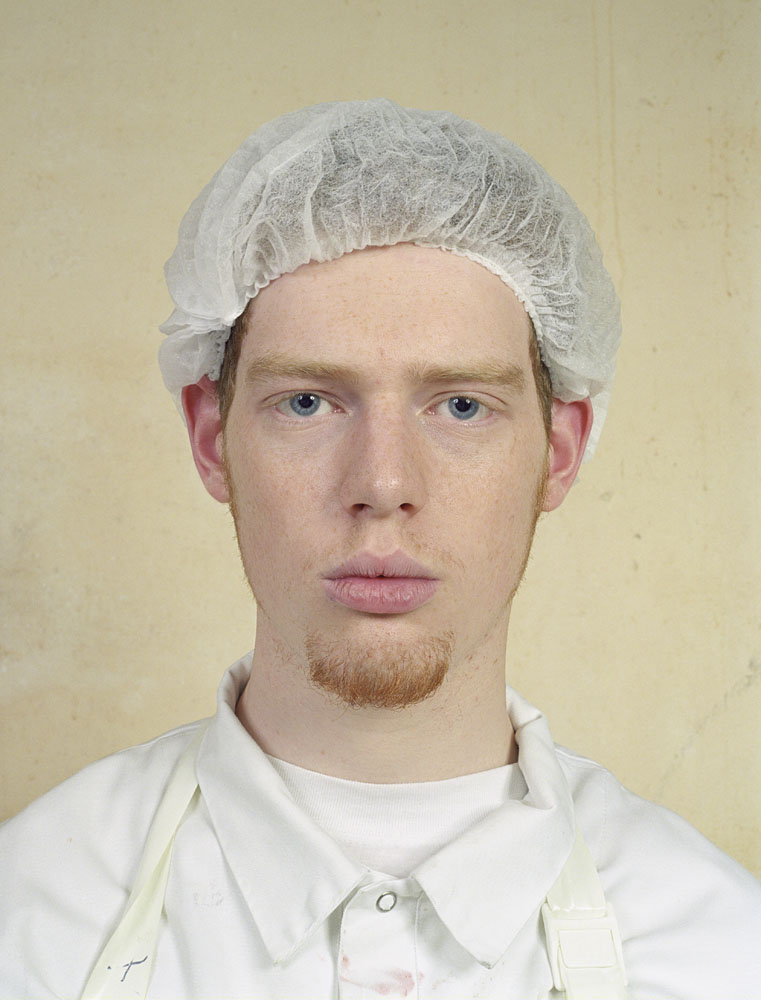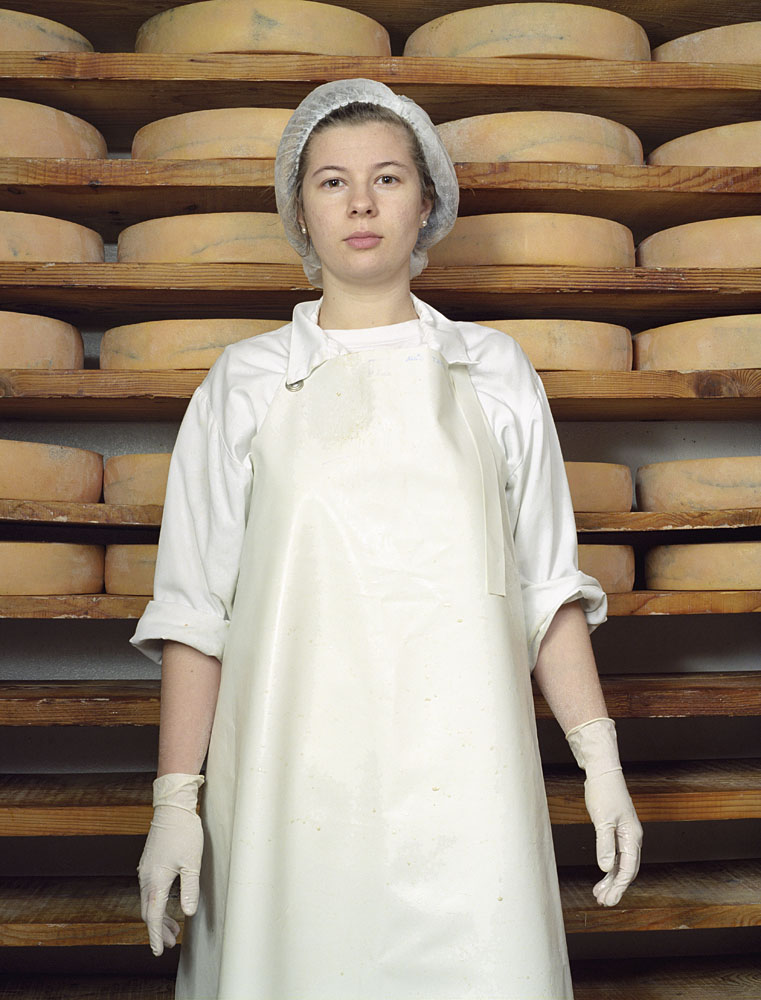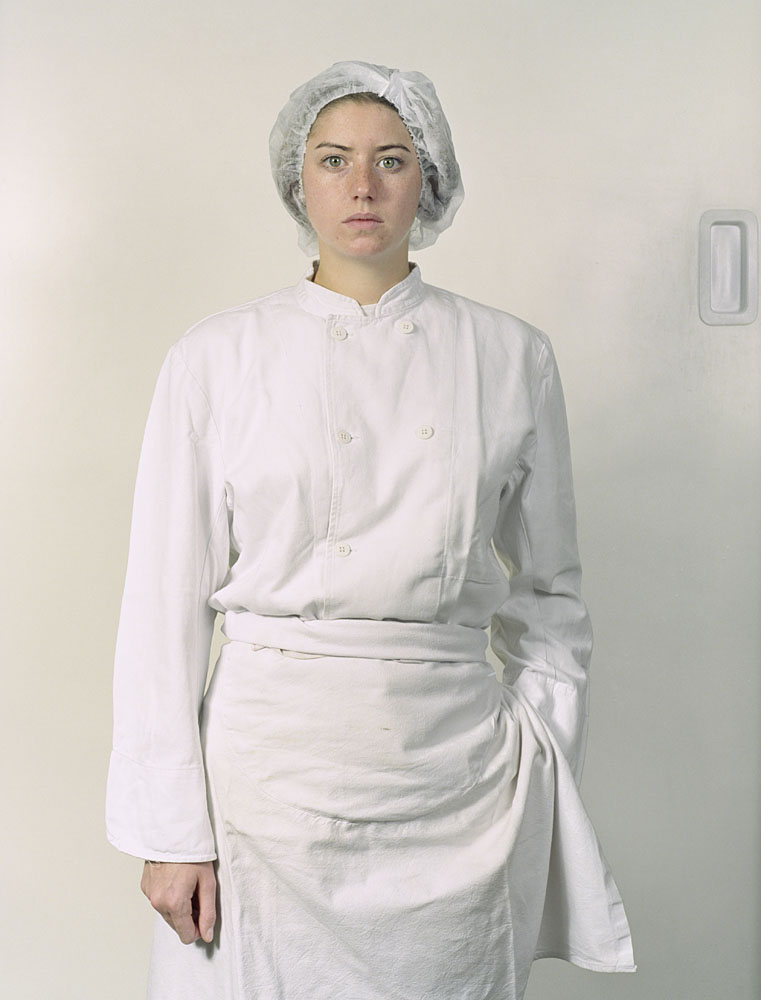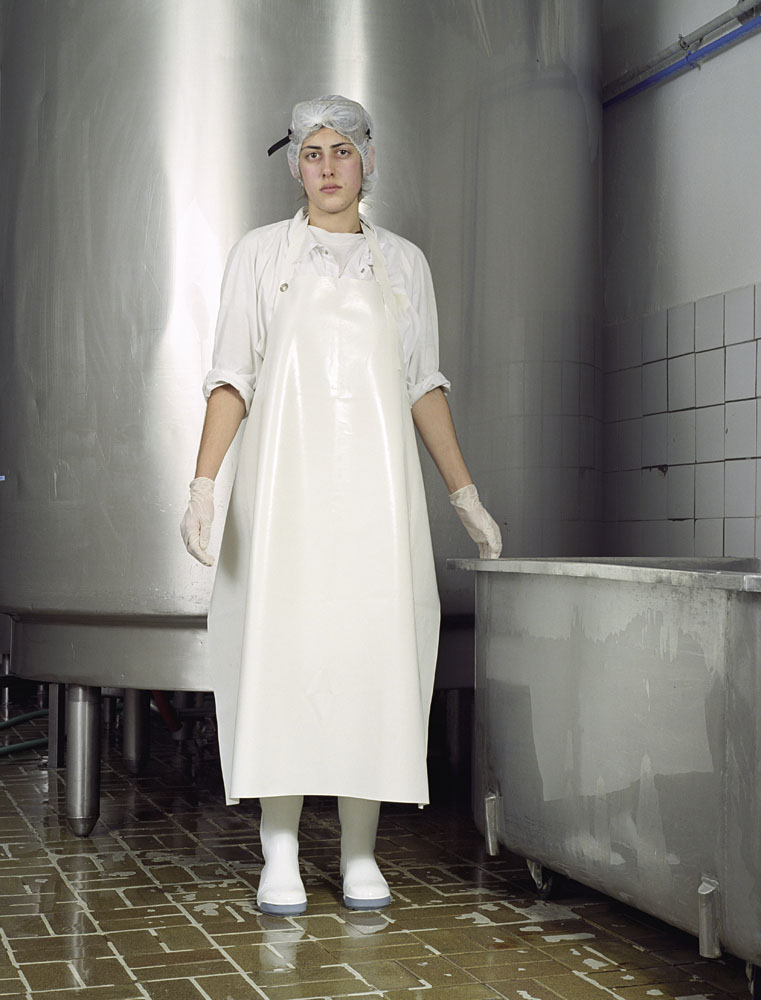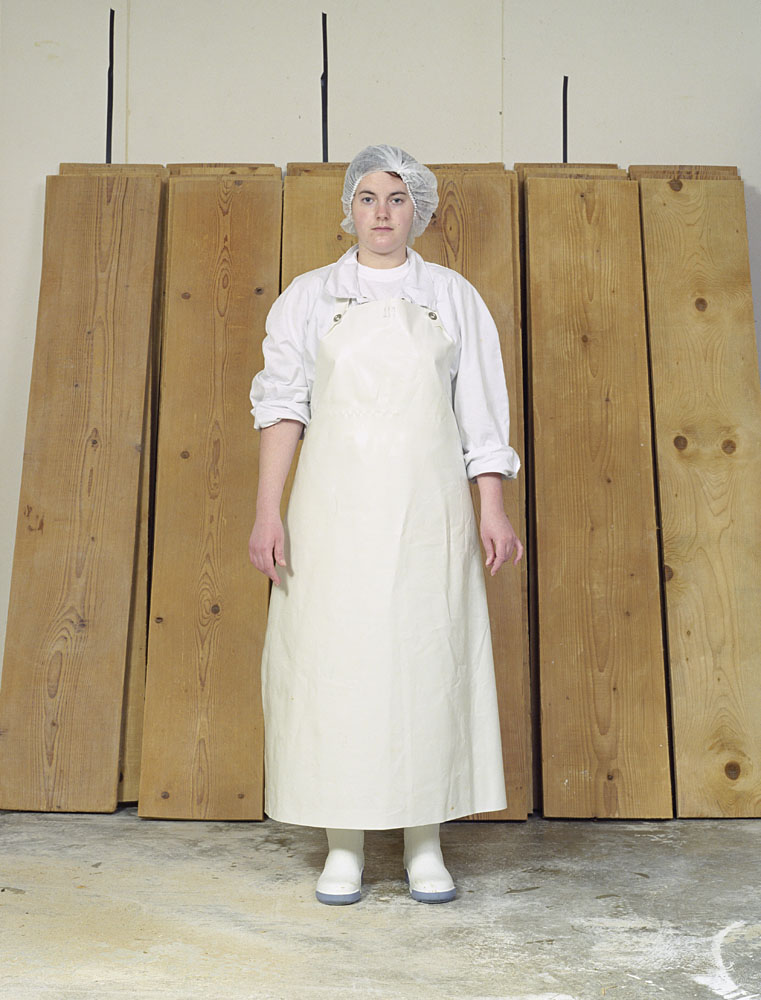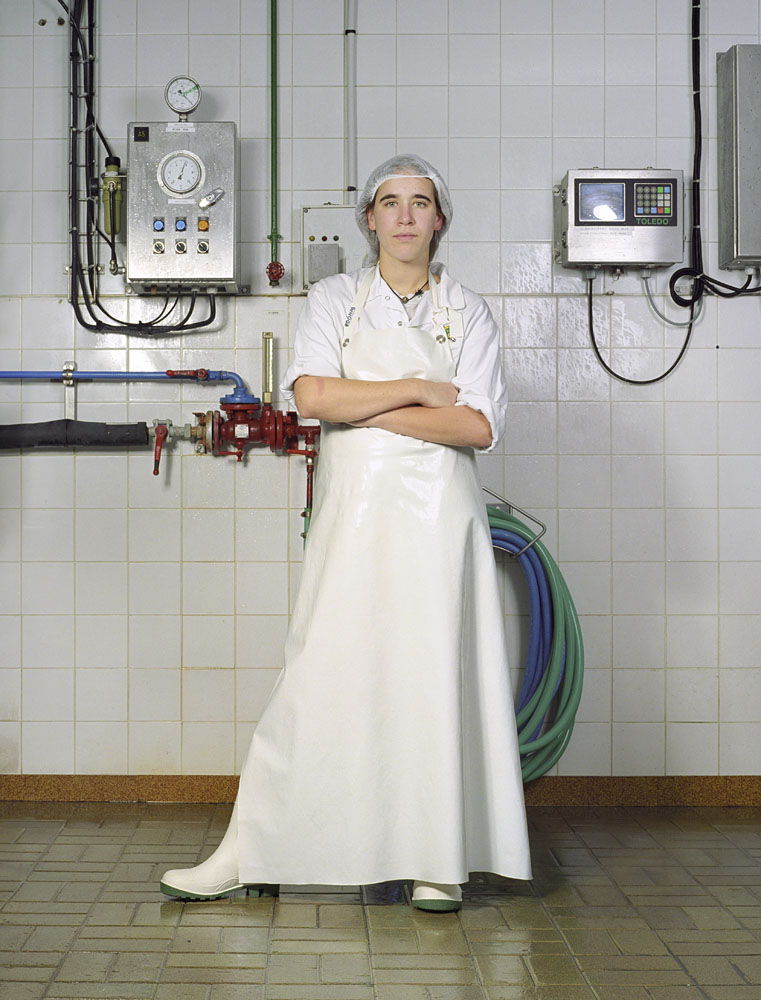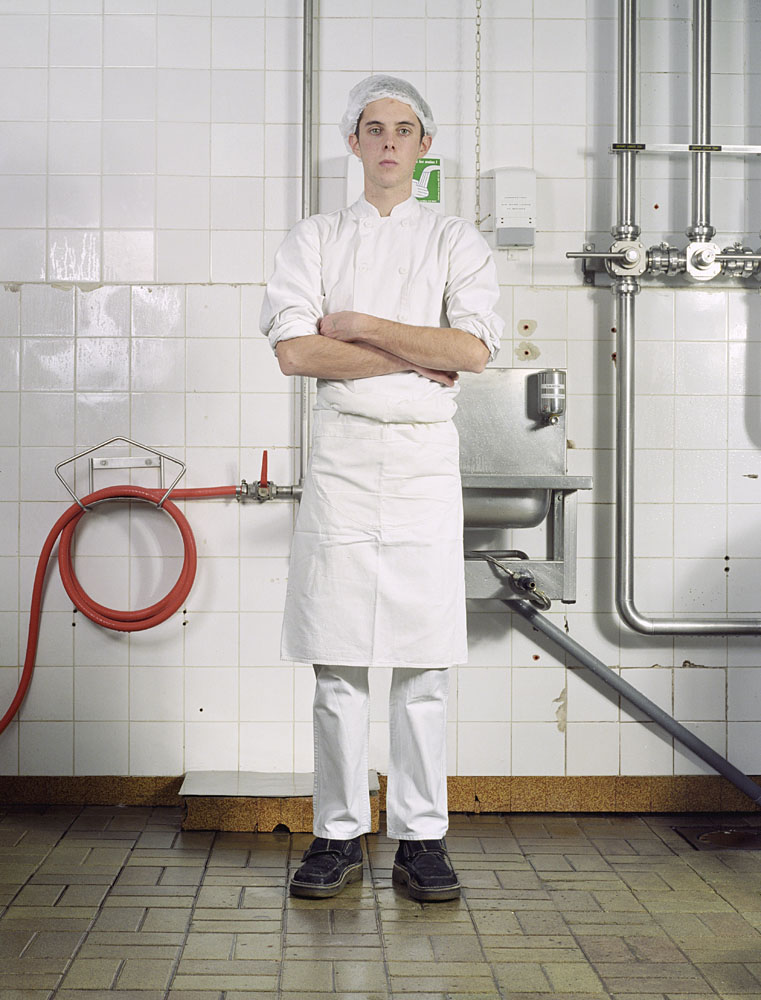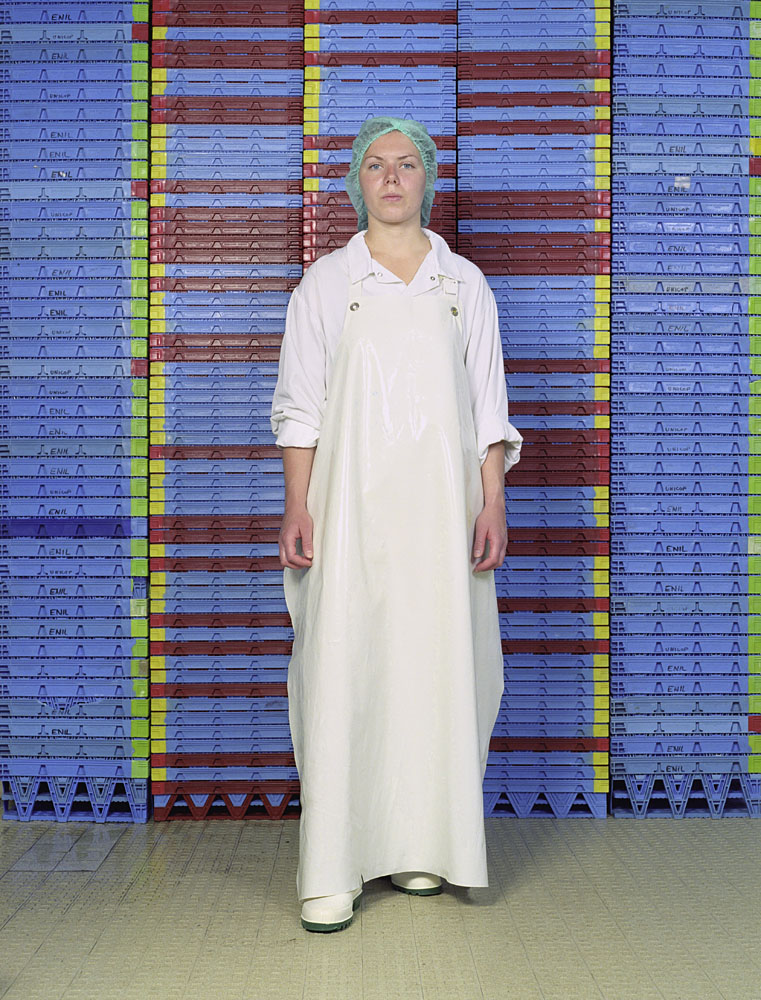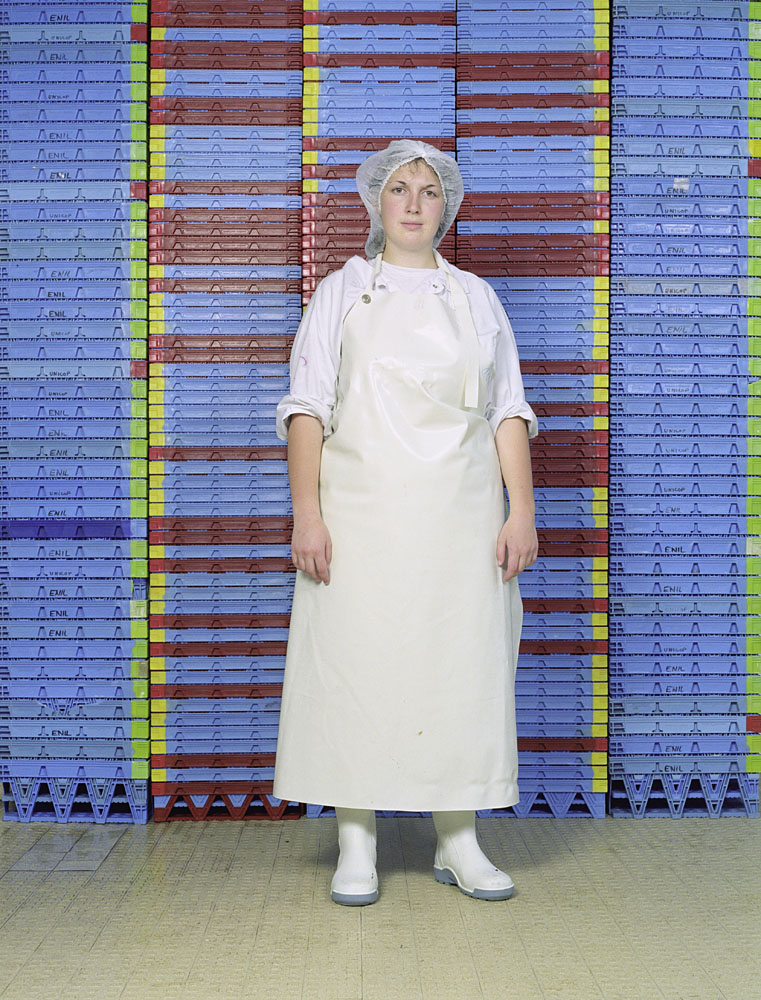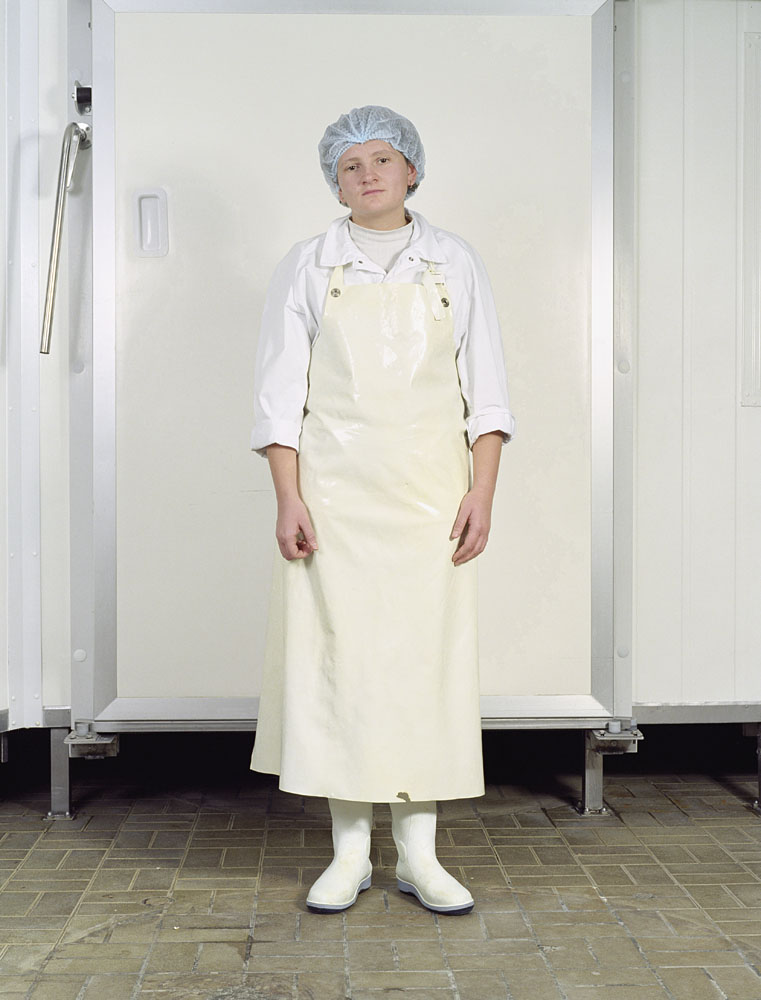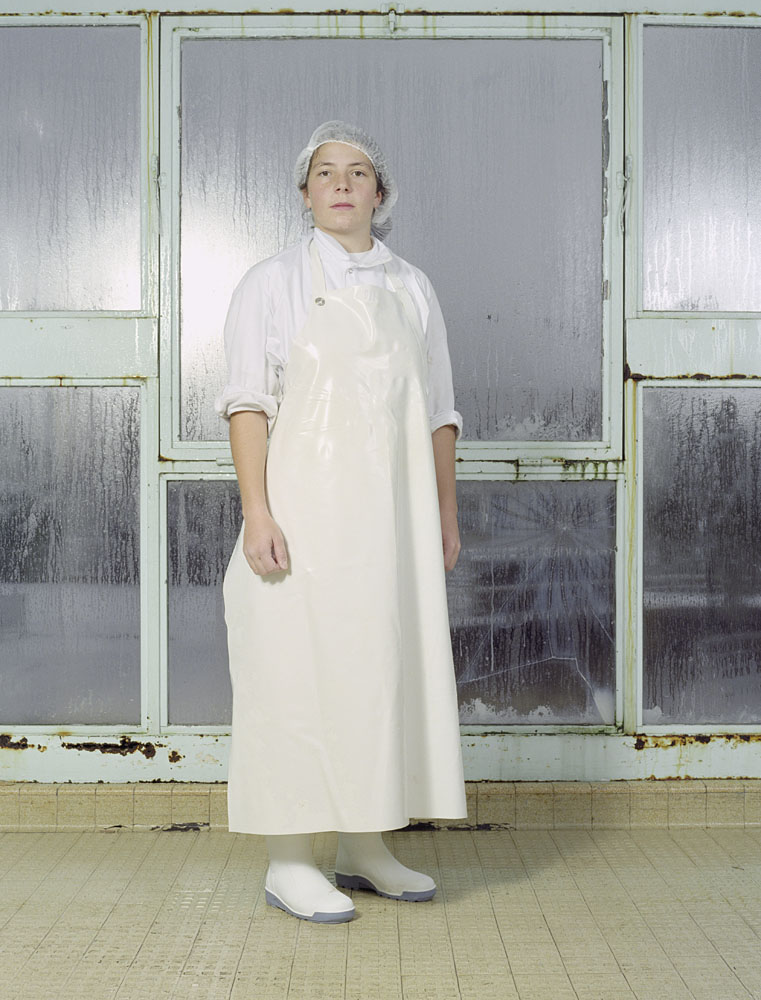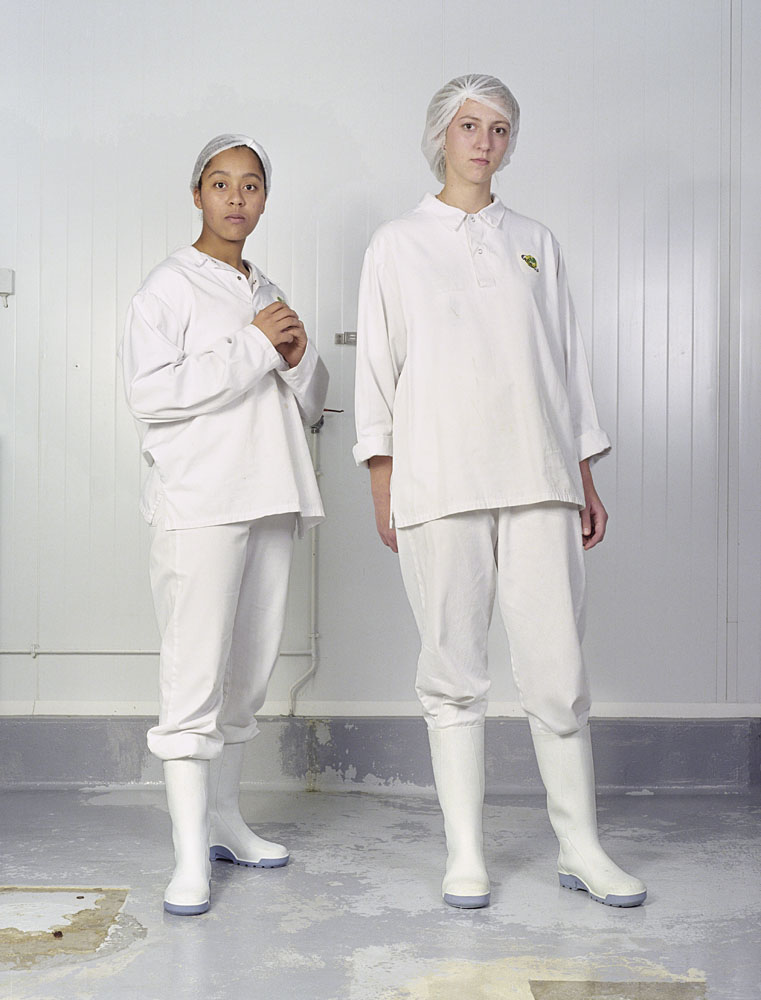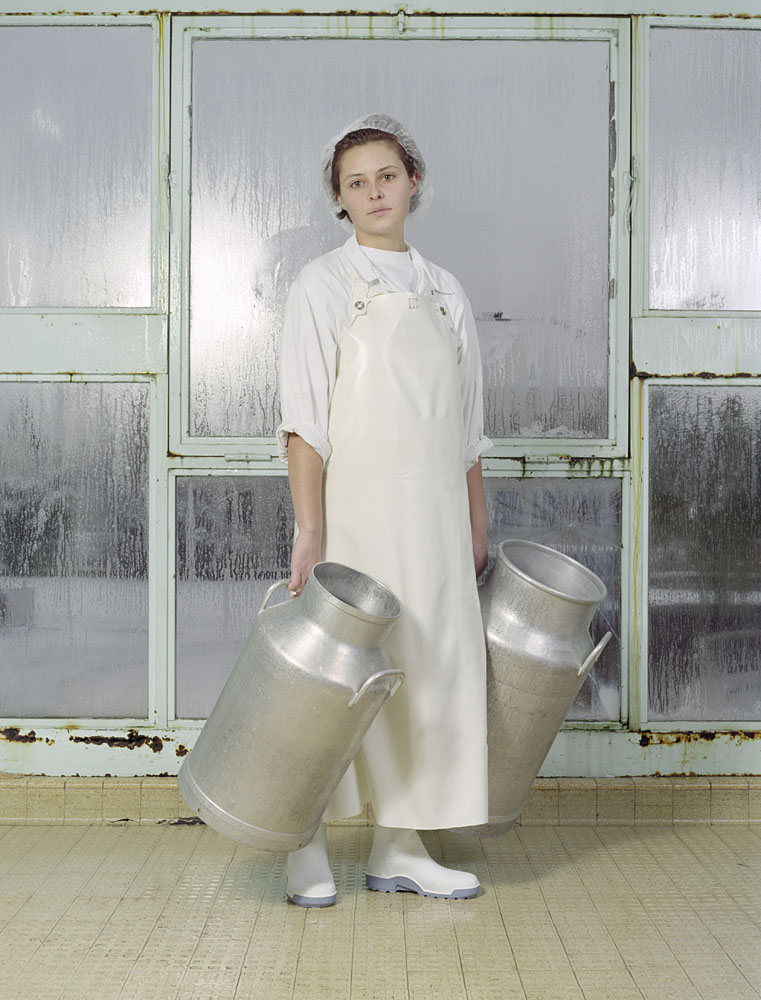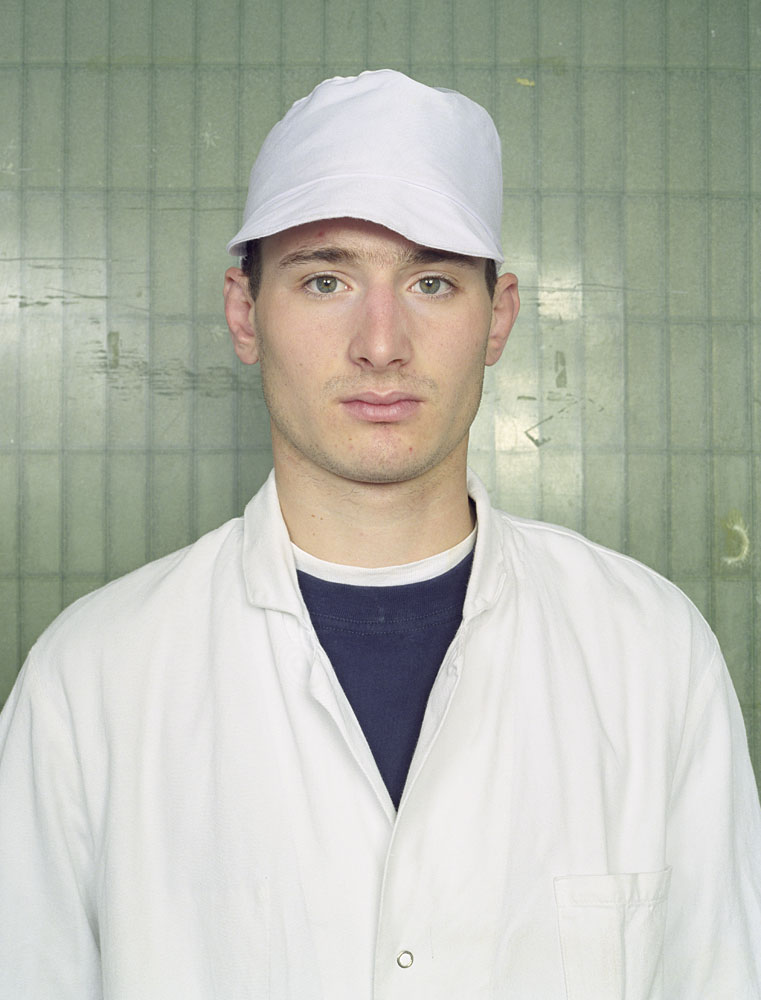Charles Fréger made the Pattes blanches series when he was still an art student at the Rouen Beaux-Arts, from which he graduated in 2000. The setting for the series is the Ecole Nationale d’Industrie Laitière et de Biotechnologies, a dairy industry school at Poligny, in the Jura Mountains, Eastern France.
Fréger took the photographs over a period of two academic years at the school. The work clearly defines the territory which he decided to occupy at the start of his career and which he continued to exploit over the next ten years, namely portraits of apprentices and the relationship of the individual with their chosen work community. The interface between these two is the uniform, the sign of membership of a community, and this is the thread running through the whole work. The series form lends itself logically to uniforms; it is a formal framework superimposed on a community framework and, as such, a perfect way of highlighting similarities and dissonances. This series represents the first fruits of a vast corpus that Fréger has assembled since then under the title Portraits photographiques et uniformes (‘Photographic and Uniform Portraits’), which he still uses today as a definition of his practice. Take a look, you’ll see the title under the photographer-bear on the left.
These young men and women, in their overalls, mob caps, and white gloves, are learning how to work with milk fermentations. In order to photograph them, Charles Fréger applied a strict protocol: set up the tripod, the flashes and the reflective umbrellas; place the subject among the machines and instruments of their trade; work out the composition, with the subject’s body parallel to his own, full-length or head and shoulders. Within the strict working framework that Fréger imposed on himself, there is scrupulous attention to textures and materials: milky skin, spotlessly clean tiling, brushed aluminium, and white aprons, in a complementary interplay of reflected light.
